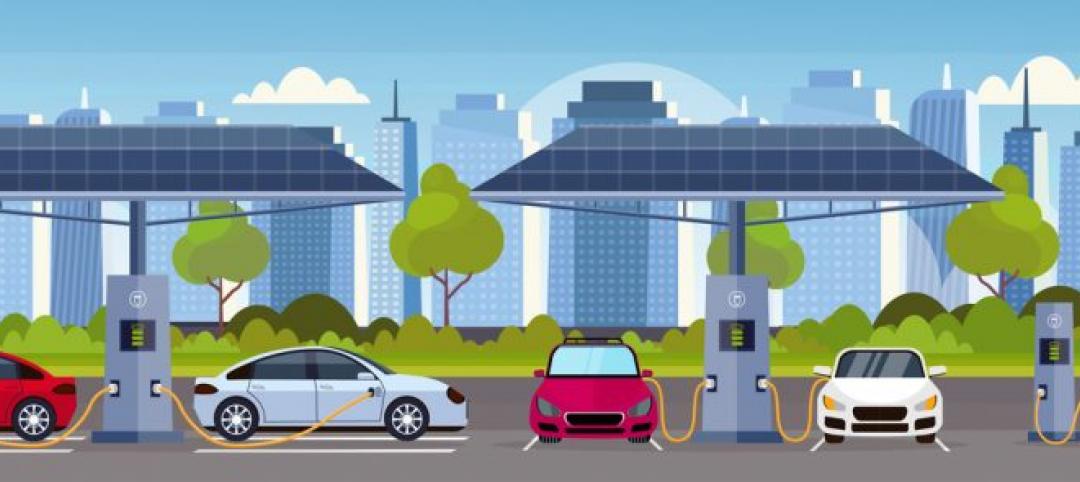New technologies for visualization and reality capture are expanding what the AEC industry can do when assessing a site—an often-arduous task that doesn’t always capture the big picture or the small details. While photos and drawings can offer a small glimpse of an overall site, it can be challenging to visualize and understand how all elements relate to one another.
Drones can be particularly helpful when assessing a building’s lighting and security and pointing out areas of vulnerability. By flying drones at night, we can see an enhanced view of a building and the owners’ entire site. We look at their lighting and identify where there may be gaps that cause security issues. We gather the data points to create a 3D model that we can show clients and design team members to help visually communicate the challenges and how we can help solve them.
Benefits of drone software
This visualization and reality capture can provide accurate and current information about existing sites, buildings, lighting, and other elements quickly, safely, and cost-effectively. With such accuracy, the data provided can help our clients with tasks like cost estimating, can capture visual components outside the scope of work or on adjacent site considerations, and provide greater operational safety since people do not need to be put in dangerous situations to gather the data.
We recently did a night drone flight for a client in Denver to provide a lighting and security assessment to address potential safety concerns. We used multiple technologies including GPS, a 360-degree camera, illuminance meter, and drone to capture visual, spatial, and light measurements within the site. We then leveraged GIS to combine the data collected and supplement our reporting. The results were highly visual and included a heat map of the lighting measurements, night-time aerial image overlay, and photograph locations. We delivered this to the client with our notes and suggestions for improving lighting and security.
I’ll be presenting on this topic with my colleagues Shanna Olson, Architectural Lighting Leader, and Ryan Searles, Security Consulting Group Leader, at the annual AIA conference this June. Our presentation, “Enhanced Visualization & Reality Capture from a Bird’s Eye View” will be at 4 p.m. June 9, and we’ll be sharing some cool new drone footage and strategies for using visualization and reality capture.
You can also listen to a podcast we recorded about some of the innovative technology we’re using for our site assessments:
More from Author
IMEG Corp. | Jun 18, 2024
A healthcare simulation technology consultant can save time, money, and headaches
As the demand for skilled healthcare professionals continues to rise, healthcare simulation is playing an increasingly vital role in the skill development, compliance, and continuing education of the clinical workforce.
IMEG Corp. | Jan 11, 2024
Designing for personal technology is crucial for senior living facilities
Today’s seniors are increasingly tech savvy. It isn’t enough to give senior living residents a pre-determined bundle of technology and assume that they’ll be satisfied.
IMEG Corp. | Nov 10, 2023
3 important early considerations for office-to-residential conversions
Scott Campagna, PE, Senior Director of Housing, IMEG Corp, shares insights from experts on office-to-residential conversion issues that may be mitigated when dealt with early.
IMEG Corp. | Sep 28, 2023
Structural engineering solutions for office-to-residential conversion
IMEG's Edwin Dean, Joe Gulden, and Doug Sweeney, share seven key focuses for structural engineers when planning office-to-residential conversions.
IMEG Corp. | Apr 20, 2023
13 trends, technologies, and strategies to expect in 2023
Biophilic design, microgrids, and decarbonization—these are three of the trends, technologies, and strategies IMEG’s market and service leaders believe are poised to have a growing impact on the built environment.
IMEG Corp. | Nov 16, 2022
SPC-4D: 7 reasons California hospital building owners should act now to meet seismic compliance
Seismic compliance with the applicable California building codes is onerous and disruptive for building owners, especially for a building in the heavily regulated sector of healthcare. Owners of older buildings that house acute care services have a big deadline on the horizon—Jan. 1, 2030, the cutoff date to upgrade their buildings to SPC-4D.
IMEG Corp. | Aug 1, 2022
Achieving a net-zero K-12 facility is a team effort
Designing a net-zero energy building is always a challenge, but renovating an existing school and applying for grants to make the project happen is another challenge entirely.
IMEG Corp. | Apr 19, 2022
6 trends to watch in healthcare design
As the healthcare landscape continues to evolve, IMEG’s healthcare leaders from across the country are seeing several emerging trends that are poised to have wide-ranging impacts on facility design and construction. Following are six of the trends and strategies they expect to become more commonplace in 2022 and the years to come.
IMEG Corp. | Feb 18, 2022
Crime Prevention Through Environmental Design: Comprehensive strategies to keep people and buildings safe
CPTED is so much more than surface-level protection; it encompasses multiple phases of design, social programs, colors, lighting, natural surveillance, natural access control, and even traffic curbing.
IMEG Corp. | Feb 1, 2022
Sustainable design solutions will power EV charging stations
As the EV market share has been recognized, MEP firms have been tasked with the responsibility of an entirely new design: charging stations.
















